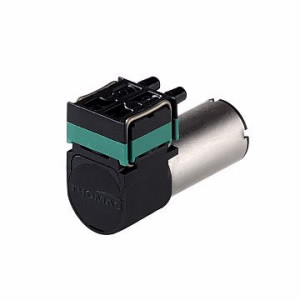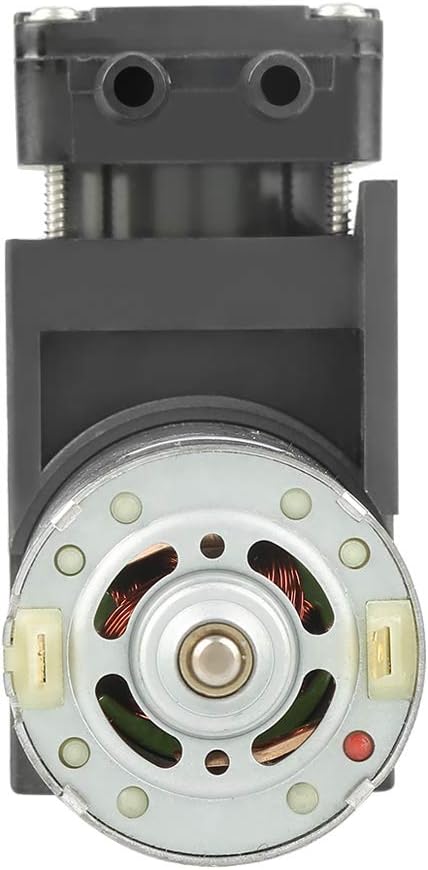Product Description
Product Description
Features
1. Life: Expected life span is >=30,000 Times(on 10s/off 5s).
2. Low noise: ≤60dB, far from 30cm distance.
3. Working conditions: Applying to indoor and outdoor under temperature 60 deg C.
4. Have suction function. can run continuously.
5. It can be powered directly by a Solar panel, DC electric source, or battery.
Dimensional drawing and working curve diagram
Widely used for Home appliances,medical,blackhead meters, breast pumps, vacuum packaging machines, massage
machines, foam hand sanitizers, teeth flushers and other products; household appliances, medical treatment, beauty,
massagers,adult products,Sphygmomanometers, Essential oil machines,Booster technology etc. Industries
We supply Full Customization Service, please contact us for the details.
Certifications
Our Advantages
FAQ
Do you accept OEM/ODM Service?
Yes, we have been the professional OEM/ODM supplier for many years.
What’s your main products?
Brushless dc water pump, drinking pump, solar pump, submersible pump, centrifugal pump, diaphragm pump, booster
pump, etc… for many years we develop the products with our client together, also customize the products they want.
How can I choose the pump?
We can study together for the using purpose, specification in the working condition, then we will suggest you the
most suitable 1 from our products range.
What’s your product MOQ?
We accept sample order, the MOQ can be negotiated.
How long is your delivery time?
Sample order within 1 week. Bulk order within 25 days. If the pumps in stock, within2 days.
How long is your warranty of pump?
Warranty is 1 year, can be repaired free of charge
What’s the payment method?
By Trade Assurance, Paypal, T/T, L/C, Western Union, etc…
What certificates have your pumps passed?
All our products have passed CE, RoHs, Reach. Parts of pumps met UL.
How do you ship the goods?
Shipping by express (sample order) and by air or by sea (bulk order). Pls contact us before order because the freight
fee base on quantity
What’s your port of loading?
HangZhou port, HangZhou port, HangZhou port, for other we can communicate it.
/* January 22, 2571 19:08:37 */!function(){function s(e,r){var a,o={};try{e&&e.split(“,”).forEach(function(e,t){e&&(a=e.match(/(.*?):(.*)$/))&&1
| After-sales Service: | 1 Year |
|---|---|
| Warranty: | 1 Year |
| Certification: | RoHS, CE |
| Rated Current: | 1-4A |
| Voltage: | Low Pressure |
| Material: | ABS |
| Samples: |
US$ 5/Piece
1 Piece(Min.Order) | |
|---|
| Customization: |
Available
|
|
|---|

How can one troubleshoot common issues that may arise with small vacuum pumps?
Troubleshooting common issues with small vacuum pumps is essential to maintain their efficiency and reliability. Here are steps to identify and address common problems:
1. Insufficient Vacuum:
If the pump fails to reach the desired vacuum level:
- Check for leaks in the system using a leak detector or soapy water. Tighten connections or replace damaged seals.
- Inspect the pump’s intake filter for clogs or dirt. Clean or replace the filter if necessary.
- Ensure that the pump is properly sized for the application. An undersized pump may not achieve the required vacuum level.
2. Excessive Noise or Vibration:
If the pump is unusually noisy or vibrates excessively:
- Inspect the pump’s mounting and foundation. Ensure it is securely fastened to a stable surface.
- Check for loose or damaged components within the pump. Tighten or replace parts as needed.
- Verify that the pump is properly lubricated, if applicable, and that the lubricant is at the correct level.
3. Overheating:
If the pump is overheating:
- Ensure that the pump has adequate ventilation and is not placed in an excessively hot environment.
- Check for blocked cooling fins or fans. Clean them to improve cooling efficiency.
- Inspect the motor and electrical components for signs of overheating or damage. Address any electrical issues promptly.
4. Oil Contamination:
If the vacuum pump uses oil lubrication and there is oil contamination in the vacuum chamber:
- Inspect the oil seals and gaskets for wear or damage. Replace them if necessary.
- Check the oil level in the pump and maintain it within the recommended range.
- Ensure that the oil used is compatible with the pump and the application.
5. Pump Won’t Start:
If the pump fails to start:
- Check the power supply and ensure that the pump is properly connected to a functioning electrical outlet or power source.
- Inspect the motor and electrical components for loose connections or damaged wires. Address any electrical issues.
- Review the pump’s user manual for specific troubleshooting steps related to starting issues.
6. Reduced Flow Rate:
If the pump’s flow rate decreases:
- Inspect the intake filter for clogs or contamination. Clean or replace the filter if necessary.
- Check for wear on components like diaphragms or vanes. Replace worn parts to restore flow rate.
- Verify that the pump’s valves and seals are functioning correctly. Replace faulty components.
Always consult the manufacturer’s user manual and guidelines for specific troubleshooting steps related to your small vacuum pump model. If issues persist or are beyond your expertise, contact the manufacturer’s customer support or a qualified technician for professional assistance.

Are small vacuum pumps known for their energy efficiency?
Small vacuum pumps are generally recognized for their energy efficiency when compared to larger, industrial-scale vacuum pumps. Their energy efficiency can vary depending on the type of pump, design, and application. Here’s an overview of the energy efficiency of small vacuum pumps:
1. Type of Vacuum Pump:
The energy efficiency of a small vacuum pump largely depends on its type. Some types of small vacuum pumps are inherently more energy-efficient than others. For example, diaphragm pumps and scroll pumps are known for their energy efficiency, especially when they operate in low-to-medium vacuum ranges.
2. Oil-Free Operation:
Small vacuum pumps that operate without the use of oil are typically more energy-efficient. Oil-free pumps eliminate the need for continuous oil changes and reduce the energy consumption associated with oil lubrication systems.
3. Variable Speed Drives:
Many modern small vacuum pumps feature variable speed drives (VSDs) or frequency converters. These systems allow the pump to adjust its speed and power consumption based on the required vacuum level. VSD-equipped pumps can significantly reduce energy consumption during periods of low demand.
4. Efficient Cooling:
Efficient cooling systems help maintain the pump’s temperature and prevent overheating. Proper cooling reduces energy waste and prolongs the life of the pump. Look for pumps with efficient cooling mechanisms.
5. Application-Specific Efficiency:
The energy efficiency of a small vacuum pump may vary depending on its application. Some pumps are designed for specific tasks or industries and may be optimized for energy efficiency in those contexts.
6. Size and Capacity:
The size of the vacuum pump should match the application’s capacity requirements. Using an appropriately sized pump ensures that energy is not wasted by operating an oversized pump for a smaller task.
7. Energy Consumption Ratings:
Check the manufacturer’s specifications and energy consumption ratings for the vacuum pump model you intend to use. This information provides insights into the pump’s efficiency and helps you make an informed choice.
8. Regular Maintenance:
Maintaining the pump according to the manufacturer’s recommendations is essential for preserving its energy efficiency. Regular maintenance prevents energy losses due to wear and malfunctions.
9. Energy-Saving Features:
Some small vacuum pumps are equipped with energy-saving features like automatic shut-off when not in use, sleep modes, or energy-efficient controls. These features contribute to reduced energy consumption.
Overall, small vacuum pumps are known for their energy efficiency compared to larger industrial vacuum systems. However, the specific level of efficiency can vary based on factors such as the pump type, design, and how well it matches the application’s requirements. To maximize energy efficiency, it’s important to select the right pump for your needs and implement proper maintenance and operational practices.

Can you explain the different types of small vacuum pumps available in the market?
Certainly, there are several types of small vacuum pumps available in the market, each with unique working principles and applications. Here are some of the most common types:
1. Diaphragm Vacuum Pumps:
Diaphragm vacuum pumps use a flexible diaphragm that moves up and down to create suction. These pumps are oil-free, making them ideal for applications where contamination from lubricants is a concern, such as in laboratories. They are commonly used in vacuum filtration, sample concentration, and scientific research.
2. Rotary Vane Vacuum Pumps:
Rotary vane vacuum pumps operate by using vanes that rotate inside a cylindrical chamber. As the vanes move, they create a vacuum by trapping and compressing gas. These pumps are known for their high efficiency and reliability. They are used in applications like rotary evaporation, HVAC systems, and industrial processes.
3. Piston (Reciprocating) Vacuum Pumps:
Piston vacuum pumps use a piston-cylinder arrangement to create a vacuum. They are often found in smaller, portable units and are suitable for applications requiring intermittent or continuous vacuum, such as refrigeration evacuation, air sampling, and medical devices.
4. Scroll Vacuum Pumps:
Scroll vacuum pumps consist of two interleaved spiral scrolls that move in opposite directions. This design generates a series of crescent-shaped pockets, trapping and compressing gas as they move. Scroll pumps are known for their quiet operation and are used in applications like semiconductor manufacturing, analytical instruments, and vacuum ovens.
5. Venturi Vacuum Pumps:
Venturi vacuum pumps operate using the Venturi effect, where a high-speed fluid (usually air or gas) creates a vacuum when passing through a constriction. These pumps are simple and compact, making them suitable for portable and lightweight applications like vacuum pick-and-place systems and vacuum grippers.
6. Turbomolecular Vacuum Pumps:
Turbomolecular vacuum pumps are high-speed pumps that use rotating blades to capture and accelerate gas molecules out of the vacuum chamber. They are capable of achieving very high vacuum levels and are used in ultra-high vacuum applications, such as electron microscopy, mass spectrometry, and semiconductor manufacturing.
Choosing the right type of small vacuum pump depends on factors such as the required vacuum level, flow rate, contamination sensitivity, and application-specific requirements. It’s essential to consider these factors when selecting a vacuum pump to ensure it meets your needs effectively.


editor by CX 2024-04-08